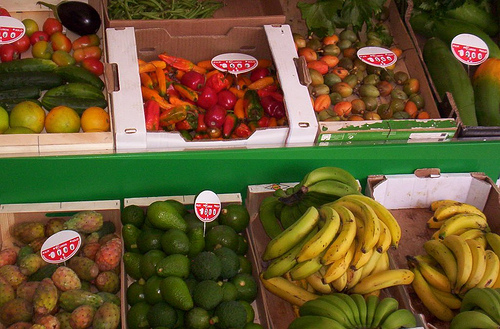
 If you’re going through cancer treatment, you may have heard that switching to organic food would be beneficial. We agree. A recent review of the results of nearly 100 studies concluded that, on average, organic fruits and vegetables have more vitamins, minerals, and beneficial antioxidants than their conventionally grown counterparts. At the same time, according to other research, conventionally grown produce, on average, has lower levels of vitamins and minerals than it did 50 years ago. Declining nutrients include phosphorous, iron, calcium, protein, riboflavin, and ascorbic acid (vitamin C).
If you’re going through cancer treatment, you may have heard that switching to organic food would be beneficial. We agree. A recent review of the results of nearly 100 studies concluded that, on average, organic fruits and vegetables have more vitamins, minerals, and beneficial antioxidants than their conventionally grown counterparts. At the same time, according to other research, conventionally grown produce, on average, has lower levels of vitamins and minerals than it did 50 years ago. Declining nutrients include phosphorous, iron, calcium, protein, riboflavin, and ascorbic acid (vitamin C).
If we want to stay healthy, going organic is a no-brainer. However, it can also put a dent in the food budget. Quality fertilizer, weeding by hand (because of herbicide restrictions), and lower yields all contribute to prices that are a bit higher. But you don’t have to settle for lower nutrients. We’ve got a few tips that will save you money when shopping organic.
- Buy local. Local produce is not only more economical, it’s typically more nutritious. After all, it’s fresh-picked and didn’t have to be shipped. Go to your local farmer’s market for fresh fruits and vegetables, jellies and jams, and other tasty items in season.
- Take advantage of sales. Check your local newspaper and coupon collections for organic items. Do some investigating at your area grocery stores-when do they have sales? At the end of the month? Weekly? Are there discounts for senior citizens? Bargain bins?
- Buy in bulk. Some stores offer lasting items like flour, nuts, whole grains, and dried fruits in bulk. Stocking up can save significant cash.
- Check out website coupons. Many online sites offer coupons for organic items. Here are a few: Naturally Savvy, Stonyfield Farm, Organic Valley, and Annie’s Homegrown. If you’ve got a favorite brand, look it up on the Internet-you’ll likely find a free coupon.
- Consider store brands. Many grocery-store chains now offer their own organic brands for less. Safeway has the “O” brand, for instance, and Costco produces Kirkland Signature Organics.
- Be flexible. If you planned broccoli for dinner, but it’s $4 a bunch this week, wait until next week when the price goes down. Experiment with another vegetable that’s on sale.
- Join a co-op. Some areas have a food cooperative-a group of people that operate their own store. Members pay a share or volunteer a few hours of work a week. To find out if your area has one, look in the cooperative grocer directory, or call the National Cooperative Business Association for a recommendation.
- Freeze, freeze! When you do find organic produce on sale, take the time to buy some extra and freeze it. For instance, most organic produce is reasonable in the summer, but much more expensive in the winter. Frozen fruits can be really welcome in the snowy months, and frozen vegetables are perfect for soups and stews.
- Pick your own. Many organic farms offer days when you can go and pick your own fruits and vegetables. Nothing gets fresher than that-or tastier! It can also make for a great family outing. To find one in your area, check out pickyourown.org.
- Shop cautiously at Whole Foods stores. Sometimes organic “specialty” stores are more expensive than regular stores that carry organic items. Be sure to shop around and compare.
Have another tip to help us save money on organic food? Let us know!
Picture courtesy of Secret Tenerife, via Flickr.com.

